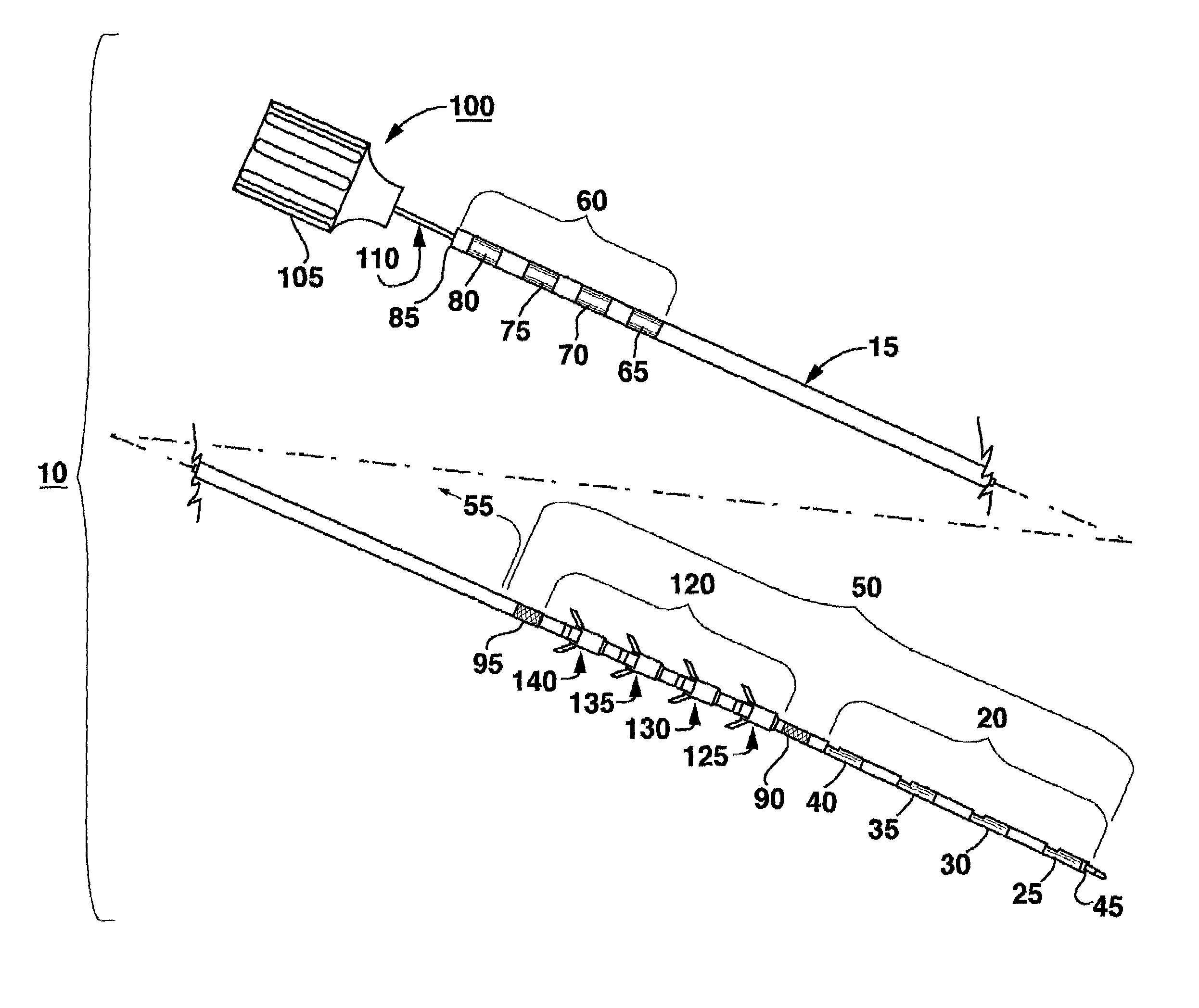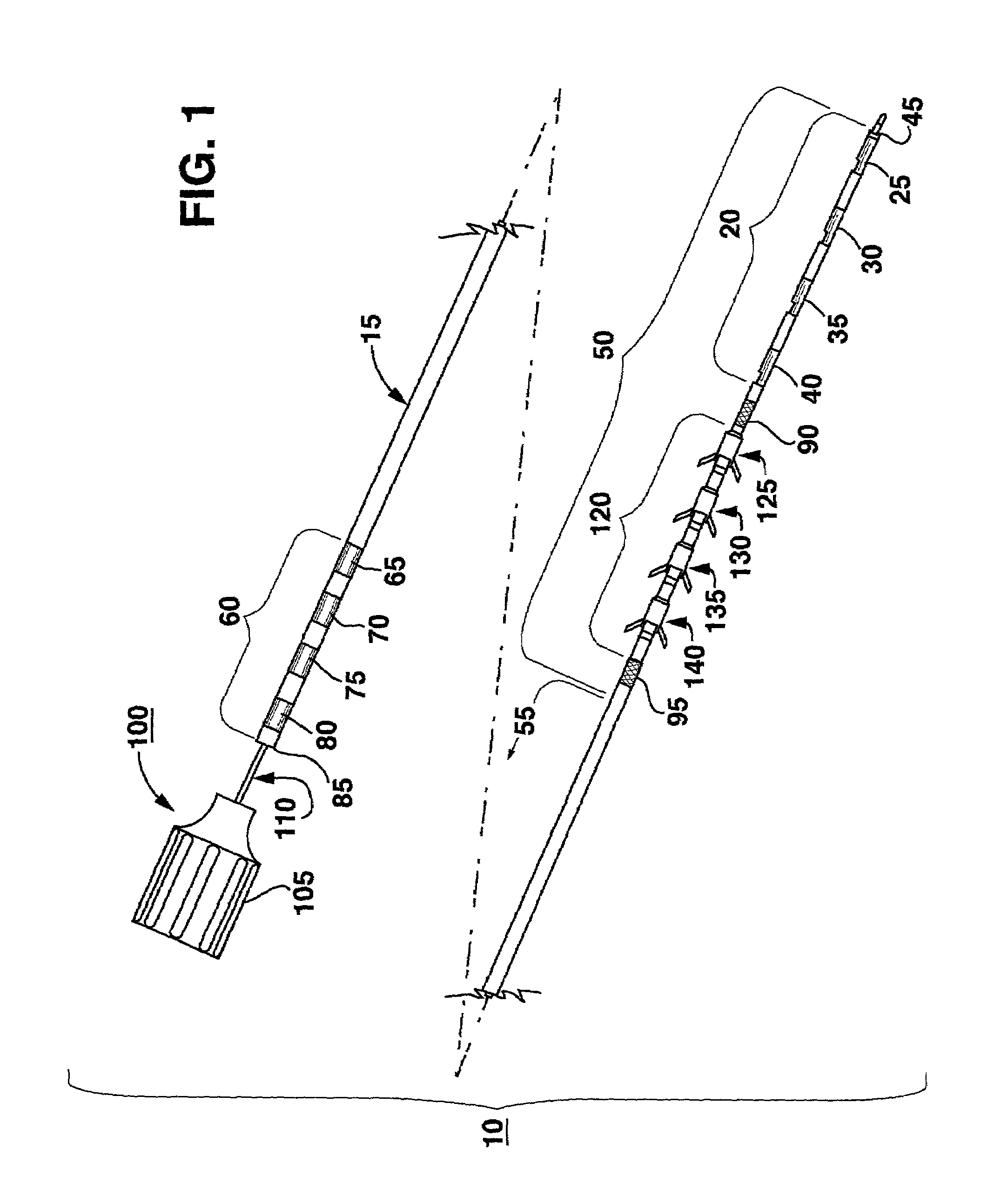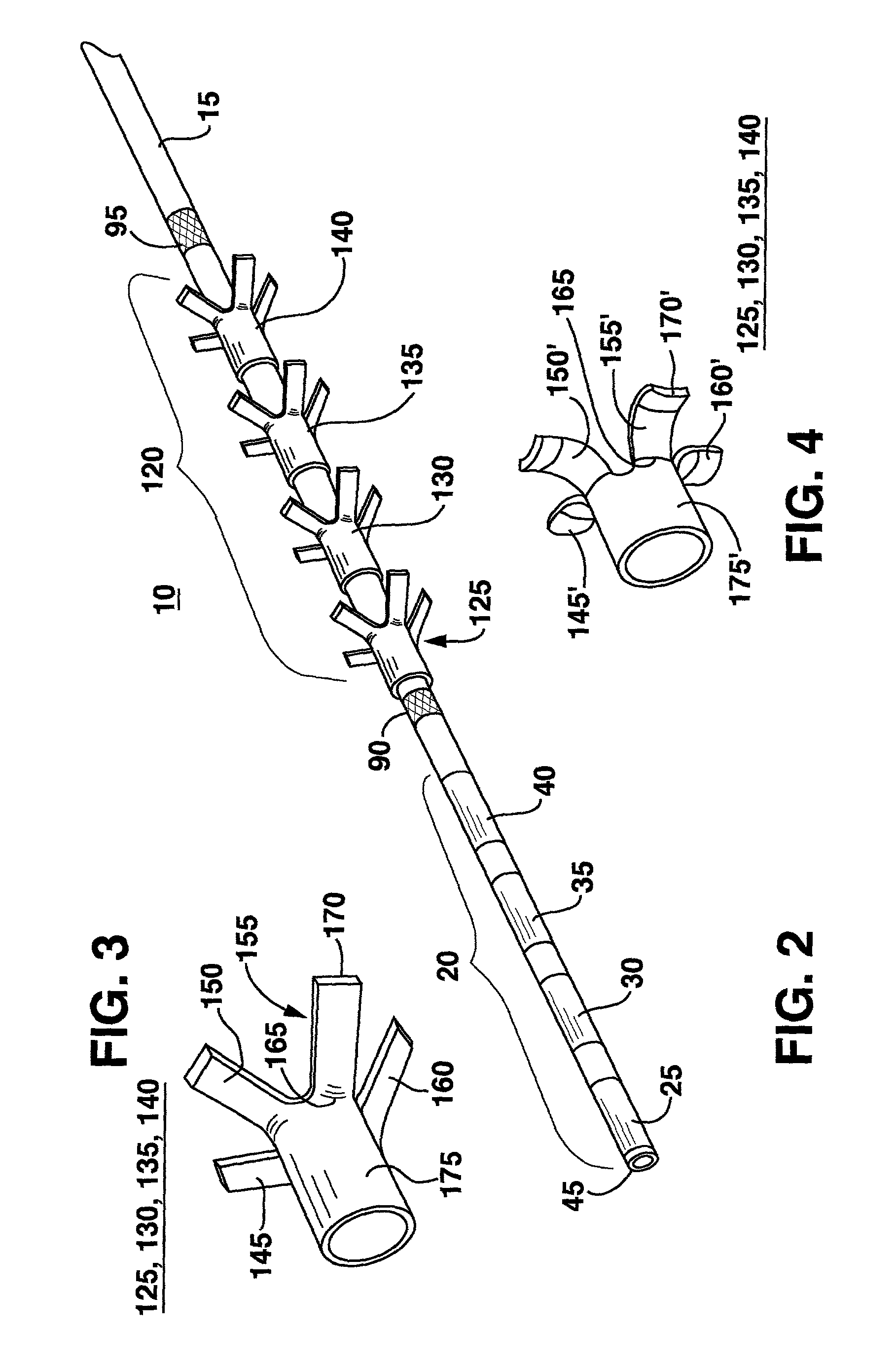Implantable medical electrical stimulation lead fixation method and apparatus
a technology of medical electrical stimulation and lead fixation, which is applied in the field of method and apparatus, can solve the problems of low success rate of surgical procedures, inability to reverse, and insufficient medical treatment of disease states,
- Summary
- Abstract
- Description
- Claims
- Application Information
AI Technical Summary
Benefits of technology
Problems solved by technology
Method used
Image
Examples
Embodiment Construction
and the preferred embodiments follow, after a brief description of the drawings, wherein additional advantages and features of the invention are disclosed.
[0039]This summary of the invention has been presented here simply to point out some of the ways that the invention overcomes difficulties presented in the prior art and to distinguish the invention from the prior art and is not intended to operate in any manner as a limitation on the interpretation of claims that are presented initially in the patent application and that are ultimately granted.
BRIEF DESCRIPTION OF THE DRAWINGS
[0040]Preferred embodiments of the invention are illustrated in the drawings, wherein like reference numerals refer to like elements in the various views, and wherein:
[0041]FIG. 1 is a plan view of one embodiment of sacral nerve stimulation lead of the present invention having a tine element array and stimulation electrode array in a distal portion of the lead body;
[0042]FIG. 2 is an expanded perspective vie...
PUM
 Login to View More
Login to View More Abstract
Description
Claims
Application Information
 Login to View More
Login to View More - R&D
- Intellectual Property
- Life Sciences
- Materials
- Tech Scout
- Unparalleled Data Quality
- Higher Quality Content
- 60% Fewer Hallucinations
Browse by: Latest US Patents, China's latest patents, Technical Efficacy Thesaurus, Application Domain, Technology Topic, Popular Technical Reports.
© 2025 PatSnap. All rights reserved.Legal|Privacy policy|Modern Slavery Act Transparency Statement|Sitemap|About US| Contact US: help@patsnap.com



